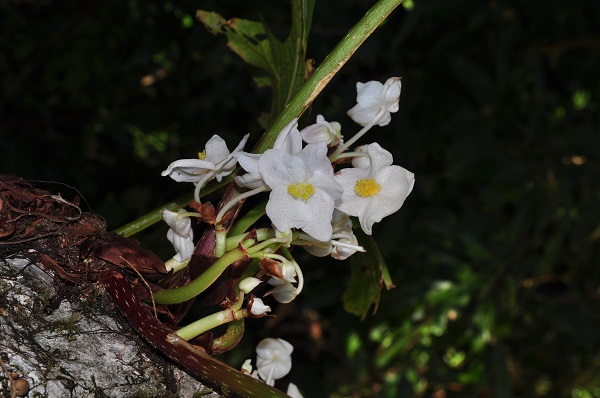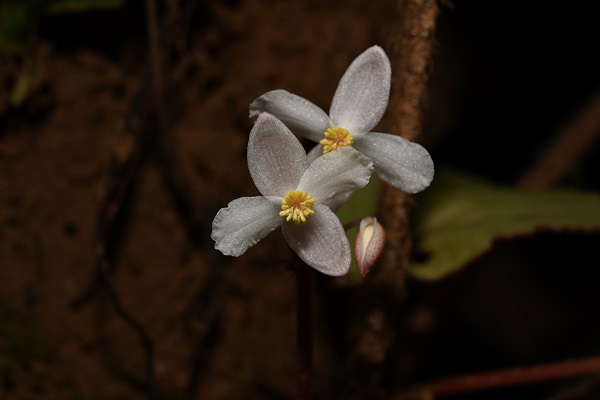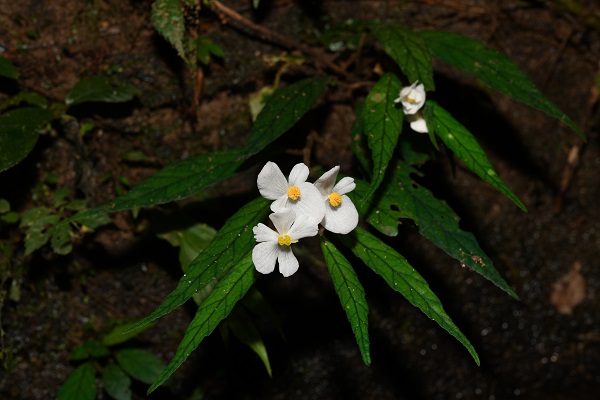Begonia is one of the largest genera of flowering plants with over 2000 species. They are found naturally in tropical and subtropical regions around the world.
From 2014 to 2020, researchers from the Southeast Asia Biodiversity Research Institute (SEABRI) of the Chinese Academy of Sciences (CAS) have conducted nine field investigations and discovered many new species. They have collected around 158 Begonia specimens in total.
The researchers conducted morphological investigations based on living plants observation in the field, literature, herbarium specimens, and cultivated plants. After all the collected materials are carefully reviewed and examined, the researchers confirmed that seven Begonia species are new to science and got them published in Taiwania.
All the seven new Begonia species are perennial herbs but differ in morphology.
Begonia casseabri is morphologically similar to B. dicressine but can be distinguished by lacerate bracteoles under the ovary and tomentose capsule. It grows on the granite rocks of tropical montane forest at about 600-1200 m altitude and is known only from the type locality, Putao District, Kachin State, Northern Myanmar.
Begonia persistens is morphologically similar to B. rheophytica but can be distinguished by having leaf blade broadly oval to ovate, larger bracteoles under the ovary and white pilose stipule. It grows on the large rock under light to medium shade of lowland forest at about 500-700 m altitude.
Begonia latibracteata has white linear papillae and rusty tomentum on petiole and peduncle, large stipules, 2 bracteoles under the ovary, ovary with densely reddish succulent strigose hairs.
Begonia natmataungensis grows on rocky cliffs of evergreen forest and has lamina lobes and is shallowly incised, divided to 1/3-1/2 of leaf length, without bracteoles.
Begonia amnicola grows on moist soil nearby or in stream at about 100 -200 m altitude. It has 2-locular ovary and unequal wings.
Begonia sagaingensis has white to pinkish-white flowers, overlapping leaf base, serrate apex of female flower tepals and free filaments. It grows on the moist soil slope of deep shaded environment of tropical hill forest.
Begonia chindwinensis is similar to Begonia gulinqingensis in the rhizomatous habit, thick texture of leaves and suborbicular shape of leaves, but differs in filaments free, styles 2 and ovary 2-loculed. It grows in cool and moist environment in evergreen forest at about 185 m altitude.
Contact
TAN Yunhong Principal Investigator
Center for Integrative Conservation, Xishuangbanna Tropical Botanical Garden, Chinese Academy of Sciences, Menglun, Mengla, Yunnan 666303, China
E-mail: tyh@xtbg.org.cn

Begonia latibracteata. (Image by TAN Yunhong)

Begonia sagaingensis (Image by TAN Yunhong)

Begonia amnicola (Image by TAN Yunhong)



